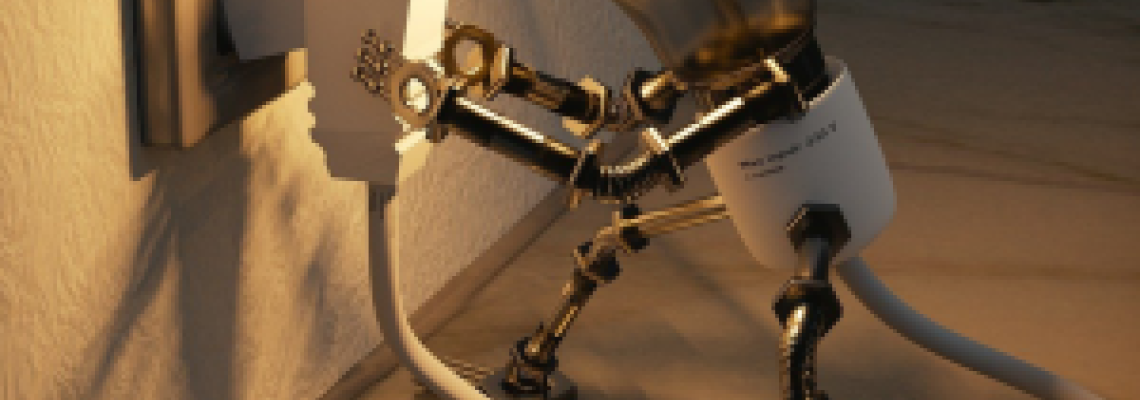Gel VS Lithium-Ion Batteries | Product Education | AgBlogs

Gel VS. Lithium Batteries for your battery backup system
With the current
bout of load shedding experienced here in South Africa, many households are looking
at battery backup systems to power their homes when Eskom turns off the power. The
AgMarket Online store has a range of power solutions, but it is worth investigating
the best investment towards powering your home.
When
looking to buy a battery backup system it is important to note what kind of
battery is used in the system. In this article, we will be looking at the
difference between using Gel and Lithium-Ion batteries in these backup setups.
We will also look at things to consider when choosing your battery size.
What’s the difference?
Gel Batteries
consist of a silica gel network and sulfuric acid is used as the electrolyte.
This sulfuric acid is suspended in the gel and fills the gaps between the
membrane and the poles of the battery. The gel suspension means that this
battery is much more stable and vibration resistant than a normal Lead Acid
Battery. These gel batteries can be discharged up to 50% before recharge, yet
the recharge rate is much slower than that of a Lithium -Ion battery as the battery
is not adapted to high charge and discharge currents.
Gel
batteries can take up to 72 hours to fully recharge, due to the lower charge
and discharge current. Discharging these kinds of batteries by more than 50%,
or not fully charging the battery before the next use, will considerably lessen
the lifespan of your battery.
These Gel
batteries normally have about 500-1500 charge/discharge cycles but, as
mentioned above, the incorrect use of these batteries will lessen the number of
cycles you can get out of your battery.
On the
other hand, Lithium-Ion batteries are just as safe as Gel batteries but that is
where the similarities stop. Lithium batteries last twice as long, charges
twice as fast and are half the weight of a normal gel battery. As a bonus, they
can carry 2-3 times the discharge load than a Gel battery can over the same period.
Eg: a 100ah
Gel battery will carry a 200W load for around 2-3 hours, whereas a Lithium-Ion
battery will carry a 200W load for around 8-10 hours.
Although
they are a bit more expensive, their benefits absolutely outweigh the cost.
These lithium batteries offer 2500 or more cycles, which is not much more than
the gel battery, but at twice the capacity and for twice as long. These Lithium-Ion batteries can be discharged up to 80% and can be fully recharged and ready
to use on the same day.
Lithium-Ion
batteries charge much quicker and are ideal for daily use as the battery can be
charged to full in a much shorter period. Lithium-Ion batteries can also be
used again when not fully charged without taking damage as a Gel battery would
have.
How do I know how much battery capacity I need?
To work out
the size of the battery/capacity you need, you will need to look at the power
that the battery can supply, multiplied by the time that the battery can
deliver the power.
For
instance, a 12V 100ah battery will give 12 x 100 = 1200 watts per hour or
1.2kWh. If you have a gel battery, which can only be discharged to around 50%,
your 100 ah 12 Volt battery will power a 600w appliance load for an hour or a
300w appliance load for 2 hours.
A 100ah
Lithium Ion battery can be discharged up to 80% capacity, meaning that a 100ah
12V battery will power a 960w appliance load for an hour and a 480w load for 2
hours. If you pull a 300w load on the lithium Ion battery, your battery will
last 3 hours, thus the lithium Ion lasts 3 times longer on the same 300w load
as a Gel battery.
A rule of
thumb for looking at what battery size you need is to look at the time you will
need power and how much power you need.
Gel:
100Ah will
pull 300W for +-2 hours OR 150W for +- 4 hours.
200Ah will
pull 300W for +- 4 hours OR 600W for +- 2 hours.
Lithium:
100ah will
pull 300W for + 3 hours OR 150W for + 6 hours.
200Ah will
pull 300W for +6 hours OR 150W for +12 hours.
The math formula
for determining battery storage capacity is Energy (Wh) = Nominal Voltage (V) x
Battery capacity rating (ah)
A 12V 200
Ah battery will be able to supply 12V x 200Ah = 2400Wh or 2.4kWh for 1 hour.
Click here to see a list of Power Consumption of Typical Household Appliances.
Best practices to prolong battery life:
1. Never discharge your battery below
the recommended Depth of Discharge. 50% for Gel and 80% for Lithium Ion
2. Ensure your battery and the
terminals to the inverter are clean and tightly fastened.
3. Consistently drawing current from a
battery without letting it fully charge degrades the battery quicker.
4. Use batteries at an ambient
temperature of 25 degrees Celsius
5. Ensure good ventilation
Gel
batteries are not recommended for use in stage 3-6 load shedding for a
prolonged period because the batteries would not get enough time to recharge to
full. Each Loadshedding session is counted as a cycle as the battery is drained
when the power is off and starts charging again when the power comes back on.
If would
like more information on our available power solutions, contact us – we are
happy to assist you.
References:
https://jouleenergysolutions.co.za/
https://www.daftlogic.com/information-appliance-power-consumption.htm
https://www.cleanenergyreviews.info/blog/simpliphi-pylontech-narada-bae-lead-
https://www.linkedin.com/pulse/5-key-differences-between-gel-batteries-lithium-ion-rosie-wang/
https://shop.thesunpays.co.za/pages/battery-technical-specifications

